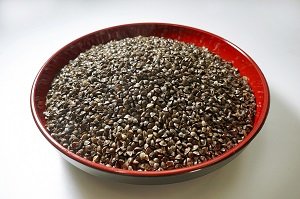Ibuki Soba / Ibuki Zairaisoba
| Registration Number | 85 |
|---|---|
| Name of the GI | Ibuki Soba,Ibuki Zairaisoba |
| Class | Vegetables/ Cereal grains/Pulses |
| Date of Protection | 2019/09/09 |
| Producing Area |
Shiga Prefecture
Maibara City |
| Applicant - Name and Address | Ibuki Soba Production Association 1760 Ibuki, Maibara City, Shiga Prefecture |
| Brand-site |
Producing Area
Ibuki Soba and Ibuki Zairaisoba (hereafter "Ibuki Soba") is indigenous buckwheat (brown buckwheat) (1)(2) cultivated on the mountainsides of Mount Ibuki (3).
They are characterized by a grain size of 4.5 mm or smaller in diameter, with the testa comprising the greater part of the grain, and this confers a light green tint and distinct buckwheat flavor to the flour and noodles.
The umami and sweetness of Ibuki Soba are comparable to other superior varieties and are highly appreciated by flour milling companies and soba noodle restaurants.
For the production of Ibuki Soba, the indigenous variety Ibuki Soba is cultivated in the producing area. The shipping standards require that grains of 4.5 mm or smaller in diameter should make up more than 70% of the total.
Today, Ibuki Soba is cultivated in areas along the valley of Ane River and also areas that spread from the entrance of the valley in Maibara City. The upstream of Ane River (4) runs on the west side of Mount Ibuki, which is sloped and well-drained, and is surrounded by mountains, where crossing with other varieties hardly occurs. Even in the downstream of Ane River in Maibara City, fields on the well-drained alluvial fan and andosol fields are suitable for buckwheat cultivation.
In 1995, Shiga Prefecture Kohoku Agricultural Extension Center began a seed multiplication initiative of the indigenous variety (Ibuki Soba). With the cooperation of the Center, farmers in the upstream of Ane River carried out test growing of the indigenous variety, which led to an increase in production scale. In 2001, this district was designated as a field for seed production. Today, the upstream of Ane River, where crossing with other varieties hardly occurs, is designated as the regular seed production area, thereby establishing a system for securing stable production while preserving the indigenous variety (Ibuki Soba).
The average production area of Ibuki Soba in recent years was about 40 ha, yielding about 24 tons. Shipped Ibuki Soba is mainly processed into buckwheat flour for noodle making during the distribution process.
As of 2018, 31 farmers are producing Ibuki Soba.
- Buckwheat: Although buckwheat seeds are known as an ingredient of galettes in European countries, varieties grown in Japan have different characteristics and are therefore used by kneading the flour with water to form a dough and thinly slicing it into noodles. The boiled noodles are commonly eaten by dipping into a sauce based on fish stock and soy sauce.
- Brown buckwheat: Hulled seeds of buckwheat.
- Mount Ibuki: The highest mountain in Shiga Prefecture with an altitude of 1,377 m, with its area designated in the Biwako Quasi-National Park. It has traditionally been regarded as a sacred mountain, and appears in the Kojiki (compiled in 712) and the Nihon Shoki (compiled in 720), the oldest remaining books of classical Japanese history.
- Ane River: A 39 km long, Class A river flowing in northern Shiga Prefecture. It is well known for the Battle of Anegawa in 1570 between the allied forces of Oda Nobunaga and Tokugawa Ieyasu, against the combined forces of Azai Nagamasa and Asakura Yoshikage.


